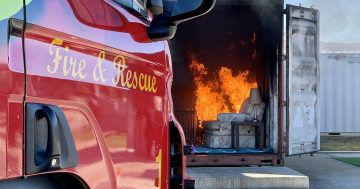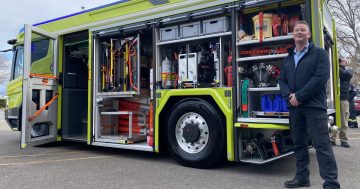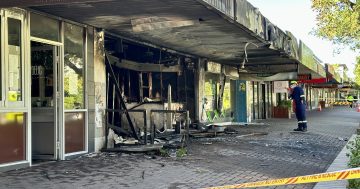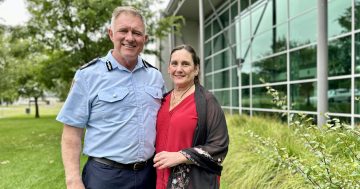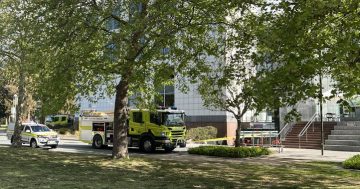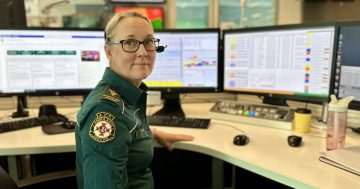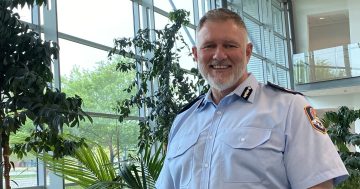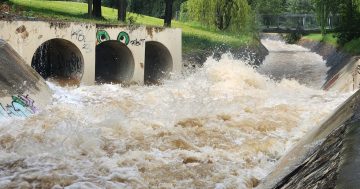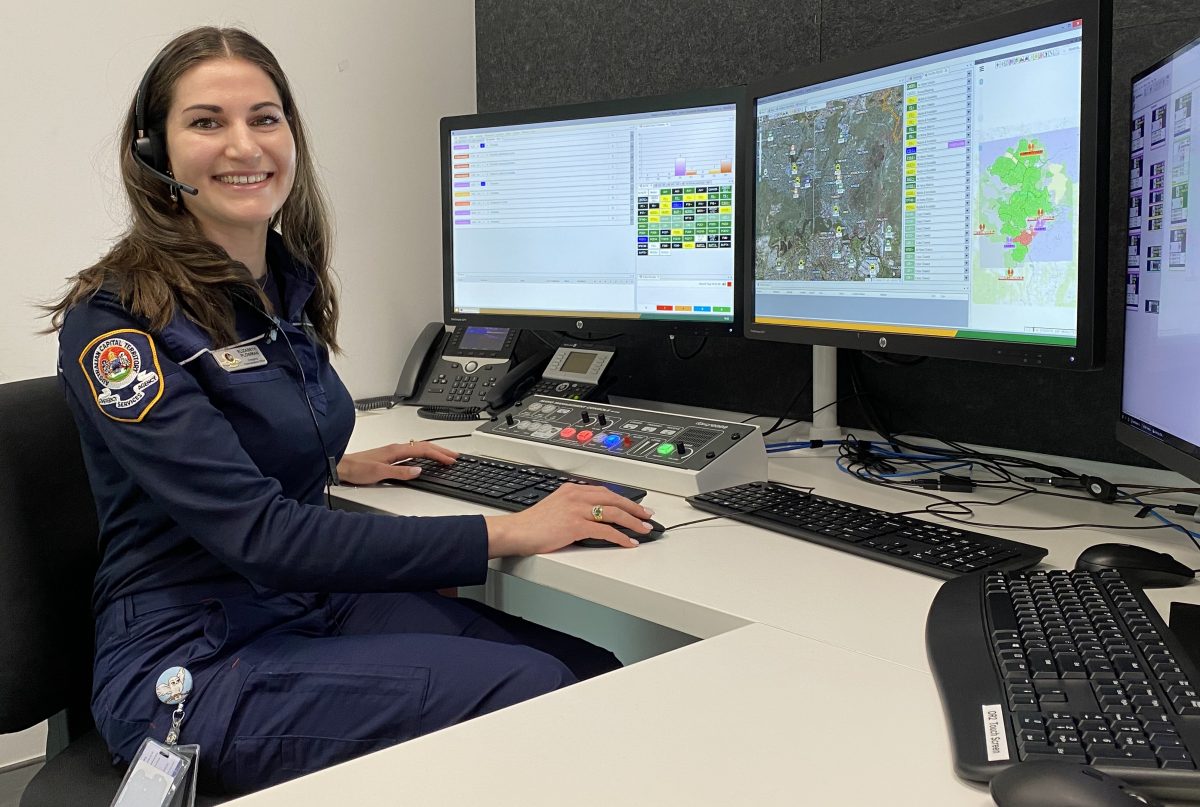
Emergency communications officer Lizzie Plowman could be the voice on the other end of the line when you call Triple Zero. Photo: Claire Fenwicke.
Call Triple Zero in Canberra and chances are you’ll speak with Lizzie Plowman, an emergency communications officer with the ESA.
The 25-year-old has coordinated Fire and Emergency responses across the Territory for the past year and said it’s nothing like she expected.
“I thought it would just be fires, but I deal with a lot of SES and community events. I really hadn’t considered what Fire and Rescue does behind the scenes,” Lizzie said.
“I also thought it would be intense all the time, but while it can go from zero to 100 in seconds and all hell breaks loose, it also calms down. It really ebbs and flows.”
Lizzie thought the job sounded “pretty cool” when it first caught her eye, and she had always wanted to work in an area where she could help people. But she didn’t realise the depth of skills she’d learn handling the phones.
She was also surprised by her resilience when taking the more major emergency calls.
“I wasn’t sure how I would cope with the difficult calls, but it’s a great team, and you’re able to debrief and really lean on each other,” Lizzie said.
“You also work with such great people. You don’t feel like you’re working half the time.”
Lizzie had three months’ training before she received her headset.
She said she loved the problem-solving and multi-tasking aspects of the job.
“You’ll have a job that you’ve dispatched appliances [trucks], and then there’ll be another one nearby, so you have to think about splitting up the resources and then sending back up, but then you’ve got to cover holes in coverage across Canberra, there are a lot of moving parts,” Lizzie explained.
“You also have to know where all our stations are, what’s stored at each and what skills those on duty have. So, for example, Chisholm has vertical rescue equipment, so you’d send them if someone’s stuck up a crane, while CAFS [compressed air foam systems] can be found in South Tuggeranong and Gungahlin.”
The technicalities become more complex and in-depth the more you learn, which dictates exactly what resources you can assign to a job.
With structure fires, if the fire was above or below ground, in a building four storeys tall versus eight storeys tall, all changed what appliances could be sent. The type of fire would also impact the secondary response from teams such as HAZMAT.
While the community may be familiar with the work of ambulance call operators from TV, the information Lizzie needed differed.
“If it’s a fire, it’s all about making sure the people are safe, if everyone is out of the house and if there’s anyone else inside,” she said.
“We ask people to shut the doors as they get out if they can, and once they’re safe then we’ll start asking about the fire, where in the house it is, and because I’m the one who will dispatch the firefighters, I can reassure them and let them know exactly where the trucks are.
“The main role is to paint a picture for the first arriving crew.”
Lizzie said there were some difficult calls she had to take. She also took ‘overflow’ calls from ambulance services when their lines were tied up, providing help with CPR, childbirth, suicidal thoughts, and people with breathing difficulties and bleeding.
“You always remember your first death … and I’m aware you may be the last voice someone hears,” she said.
There were, of course, times when people became panicked and called Triple Zero because they needed help, and Lizzie said the team approached those calls in the same manner.
“You do get bizarre calls … [but] for them, that might be an emergency, so we’re always here to help,” she said.
“What amazes me are the different definitions of what constitutes an emergency to different people, some people are so calm when their house is on fire, but others are very distressed when a pet is stuck.
“[That said] once we had a person call because they wanted the best route from Canberra to Newcastle because of the floods … and another time some teenagers locked their keys in a car and called us instead of the NRMA, so you do have to think outside of the box sometimes.”
Emergency communication officers work two 7 am to 7 pm shifts, and then two 7 pm to 7 am shifts before they have four days off.
Lizzie started in the role while studying for a master’s degree and said it was easy to fit a good work-life balance.
For anyone interested in becoming an emergency communications officer, she said the comradery was an aspect she also enjoyed.
“Everyone has this positive attitude, which helps when you get those more difficult calls,” Lizzie said.
“You also don’t need a background in any of this, you just need to be switched on and able to learn and multi-task.
“It keeps you on your toes … you never get two days the same.”













